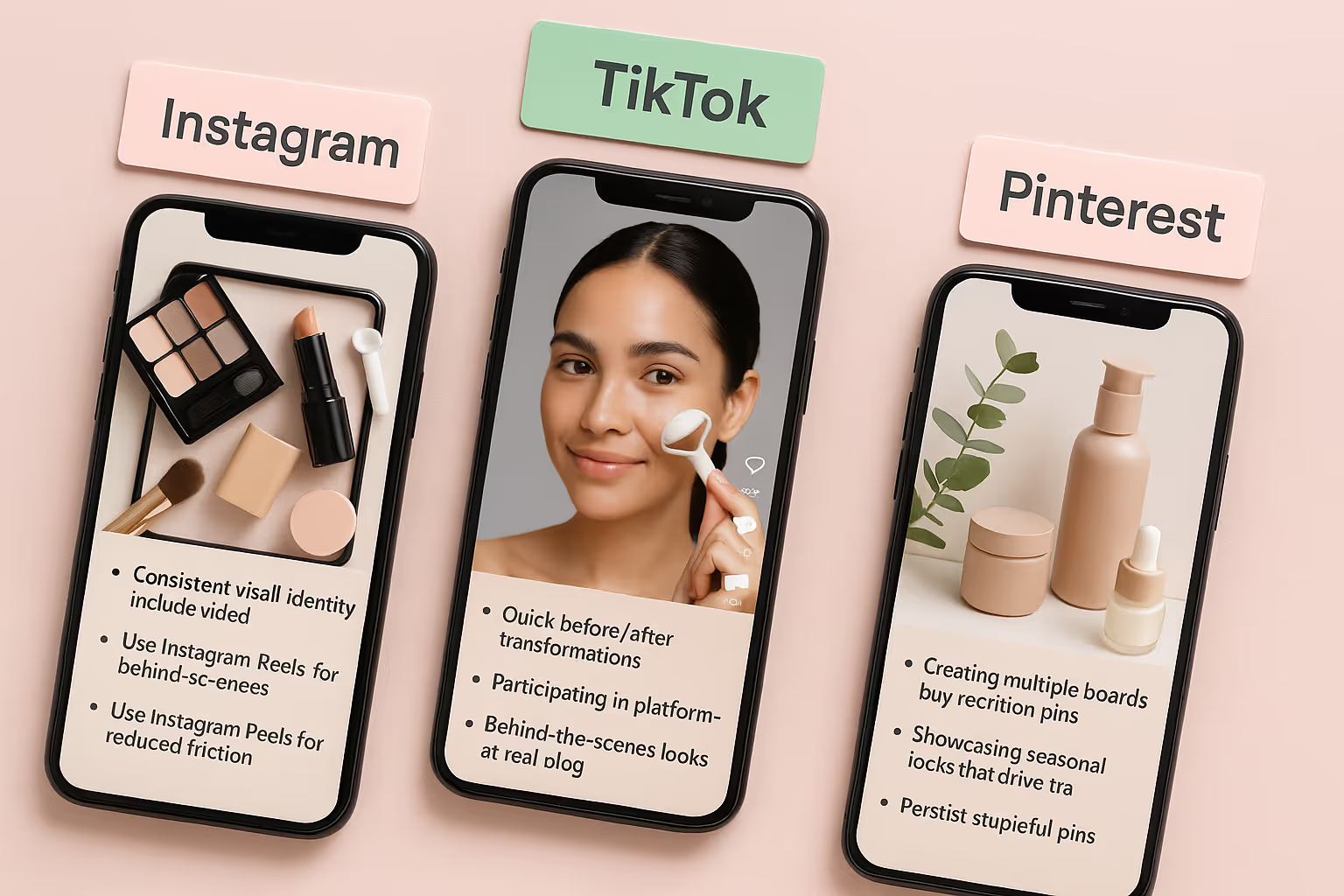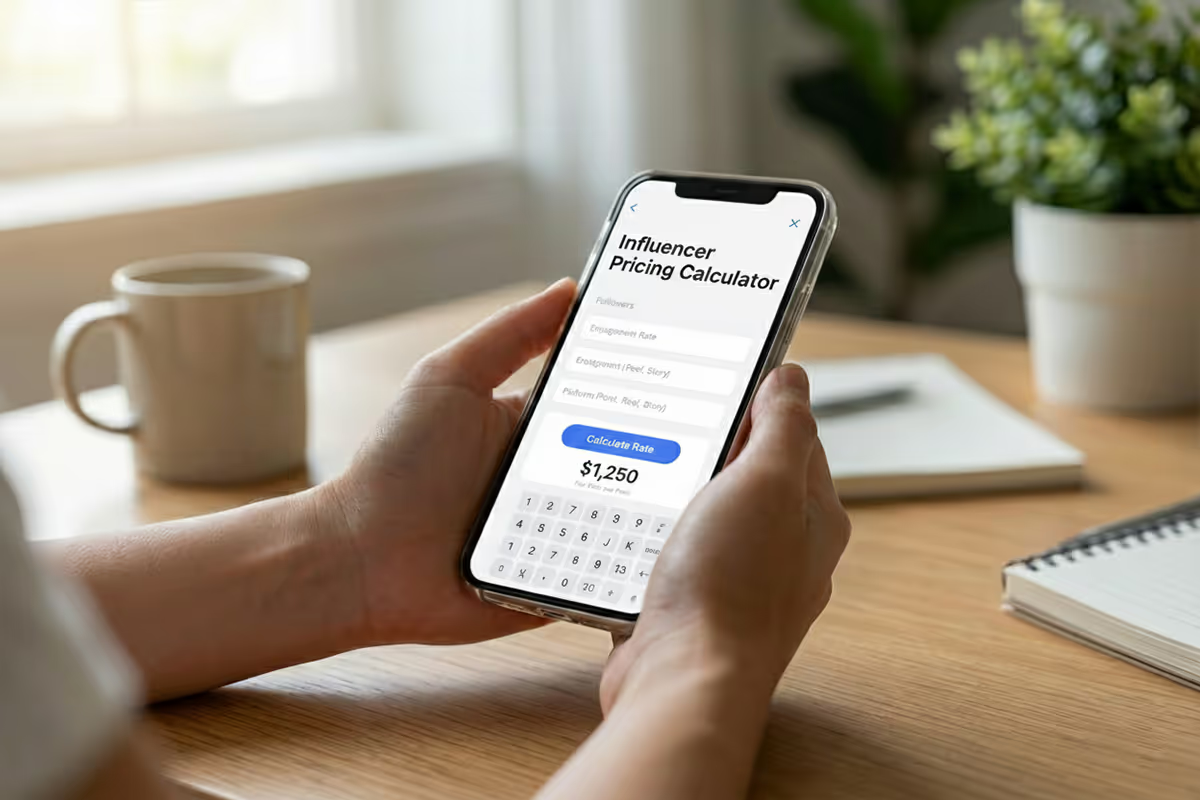How to Use Content Marketing for Beauty Products Promotion: Content Strategies

The global beauty market is projected to exceed $580 billion by 2027, and over 80% of consumers now research products online before purchasing. In such a saturated space, brands must go beyond visuals to connect.
Understanding how to use content marketing for beauty products promotion is key to winning trust and attention. When done right, content becomes a powerful tool to educate, engage, and convert beauty-savvy audiences.
Essential Content Marketing Strategies for Beauty Products
Effective content marketing is key to building a strong online presence and engaging your target audience in the beauty industry.
Create a Beauty Blog with Educational Content
A well-maintained blog serves as the foundation of beauty content marketing. It provides an owned platform where you can publish various types of valuable content:
Types of Blog Content for Beauty Brands
- Ingredient spotlights that explain the science behind key formulations
- Step-by-step tutorials for different looks or application techniques
- Seasonal beauty guides that incorporate your products
- Common beauty problems and solutions
- Behind-the-scenes looks at product development or company culture
When creating blog content, focus on answering the questions your customers frequently ask. Address concerns about ingredients, application techniques, and expected results.
Incorporate relevant keywords naturally to improve search visibility while maintaining engaging, conversational writing.
Pro tip: Create "cornerstone content" pieces—comprehensive guides on major topics in your beauty niche that can be linked to from multiple smaller articles. This improves SEO and positions your brand as an authority in specific beauty categories.
Leverage User-Generated Content
One of the most powerful aspects of beauty marketing is the ability to showcase real results from real users. User-generated content (UGC) provides authentic social proof that builds trust in ways professionally produced content cannot.
To encourage UGC:
- Create branded hashtags for customers to use when posting about your products
- Feature customer photos and videos on your social media and website
- Run contests that encourage creative content creation using your products
- Implement a review system that makes it easy for customers to share their experiences
UGC not only provides you with free content but also creates a sense of community among your customers. When potential buyers see others like them using and loving your products, it significantly reduces purchase hesitation.
Develop a YouTube Strategy
Video content is non-negotiable for beauty brands. YouTube, in particular, offers a tremendous opportunity for in-depth content that demonstrates products and builds brand authority.
Successful beauty content on YouTube includes:
- Detailed tutorials showing product application
- "Get ready with me" videos featuring your product line
- Ingredient education videos explaining the science behind formulations
- Comparison videos showing results against competitors (when done tastefully)
- Q&A sessions addressing common customer questions
Consistency is key on YouTube. Rather than posting sporadically, commit to a regular schedule, even if that means just one high-quality video per month. This helps build a subscriber base and improves your channel's visibility in YouTube's algorithm.
Harness the Power of Influencer Partnerships
Influencer marketing remains one of the most effective strategies for beauty brands, but it's evolved beyond simply paying for posts.
Today's most successful influencer partnerships integrate authentically with your broader content marketing strategy.
When working with influencers:
- Choose partners whose audience and aesthetic align with your brand values
- Prioritize engagement rates over follower counts
- Consider long-term partnerships rather than one-off posts
- Allow creative freedom while providing clear guidelines
- Track performance using unique discount codes or affiliate links
For smaller beauty brands with limited budgets, micro-influencers (those with 10,000-50,000 followers) often provide better engagement and more authentic promotion than mega-influencers at a fraction of the cost.
Email Marketing Campaigns
Email marketing remains one of the highest ROI channels for beauty brands. Building a quality email list allows you to nurture relationships with interested customers and guide them through the purchase journey.
Effective beauty email content includes:
- New product announcements with educational components
- Seasonal beauty guides featuring your products
- Exclusive tutorials or tips for subscribers only
- Customer spotlights and success stories
- Behind-the-scenes content about product development
Segment your email list based on customer preferences, purchase history, and engagement level to deliver more relevant content.
For example, send specific ingredient education to customers who have shown interest in natural products or anti-aging solutions.
Platform-Specific Content Strategies

Tailoring your content to each platform is essential for maximizing engagement and reaching the right audience in the beauty industry.
Instagram Content Strategy
Instagram remains the premier platform for beauty marketing, with its highly visual format perfectly suited for showcasing products. To maximize Instagram's potential:
- Create a consistent visual identity that reflects your brand aesthetic
- Use Instagram Stories for behind-the-scenes content and time-sensitive promotions
- Leverage Instagram Reels for quick tutorials and trend participation
- Use a mix of polished product shots and authentic user content
- Implement shoppable posts to reduce friction in the purchase journey
The key to Instagram success is balancing promotional content with valuable, educational, or entertaining posts. Follow the 80/20 rule—80% value-driven content, 20% direct promotion.
Learning how to effectively market skincare on Instagram can dramatically increase your follower count and engagement while building a community around your beauty brand.
TikTok Strategy for Beauty Brands
TikTok has quickly become a powerhouse for beauty content, with its algorithm favoring creative, authentic content over polished marketing. Beauty brands succeeding on TikTok focus on:
- Quick before/after transformations
- "Did you know" style educational content about ingredients or techniques
- Participating in platform-wide trends with your beauty twist
- Behind-the-scenes looks at product creation
- Honest reviews and comparisons
TikTok's highly engaged beauty community responds best to content that feels genuine rather than overly produced. Don't be afraid to show personality and embrace the platform's playful nature.
For beauty brands looking to maximize their reach, TikTok Shop integration can turn viral content moments into direct sales by allowing viewers to purchase featured products without leaving the platform.
Pinterest Strategy
Pinterest functions more as a visual search engine than a social network, making it perfect for beauty brands looking to capture consumers in the research phase. An effective Pinterest strategy includes:
- Creating multiple boards organized by product category, concern, or look
- Using vertical images with detailed, keyword-rich descriptions
- Creating step-by-step tutorial pins that drive traffic to your blog
- Showcasing seasonal looks and trending styles
- Pinning user-generated content of real results
The beauty of Pinterest is its longevity—unlike other platforms where content quickly disappears from feeds, Pinterest pins can continue driving traffic for months or even years.
Creating a Content Calendar for Beauty Marketing
Successful content marketing requires consistency and planning. A content calendar helps ensure you're delivering a balanced mix of content across platforms while taking advantage of seasonal opportunities.
When building your beauty content calendar:
- Identify key seasons and events relevant to your product line (summer skincare, holiday gift guides, wedding season, etc.)
- Plan content themes for each month that align with these seasons
- Balance product-focused content with educational and inspirational pieces
- Schedule content creation workflows with adequate lead time
- Leave flexibility for trend participation and real-time marketing opportunities
For beauty brands with private label skincare products, timing promotional content around seasonal skin concerns can be particularly effective—winter dry skin solutions, summer sun protection, or fall skin recovery treatments.
Measuring Content Marketing Success

To ensure your beauty content marketing efforts are delivering results, establish clear KPIs aligned with your business objectives:
- For awareness: Track impressions, reach, and follower growth
- For engagement: Monitor comments, shares, saves, and time spent with content
- For conversion: Measure click-through rates, landing page visits, and conversion rates
- For retention: Track repeat purchases, subscription sign-ups, and engagement from existing customers
Use UTM parameters for all links in your content to accurately track which content pieces drive the most valuable traffic and conversions. This data should inform your ongoing content strategy, helping you double down on what works and refine what doesn't.
Advanced Content Layering for Evergreen Beauty Funnels
Seasonal content drives spikes, but evergreen funnels ensure long-term visibility. Content layering starts with a pillar post, like “Best Skincare Routine for Oily Skin”—and spins off into videos, infographics, and email series.
This multiplies reach without reinventing your message. For beauty brands, this strategy aligns SEO, video, email, and social into one cohesive journey.
When executed consistently, it creates compounding value that boosts engagement, builds trust, and supports ongoing sales in content marketing for beauty products promotion.
Build Your Beauty Brand Through Strategic Content
The beauty industry's visual nature and educational demands make it ideal for content marketing. With a multi-platform strategy and consistent brand voice, you can build lasting connections that drive loyalty.
Effective beauty content marketing isn't about constant promotion; it’s about solving problems, sparking creativity, and building community. When you deliver genuine value, product promotion happens naturally as trust grows.
FAQ
Related blogs

Influencer Pricing Calculator: Find Your Fair Rate for Posts, Reels & Stories
.avif)
How To Market Pet Products Through Storytelling: Win Attention, Build Trust, and Boost Sales Naturally
.avif)
How To Market Coffee To Gen Z: The High-Impact Blueprint Every Brand Needs
.avif)

